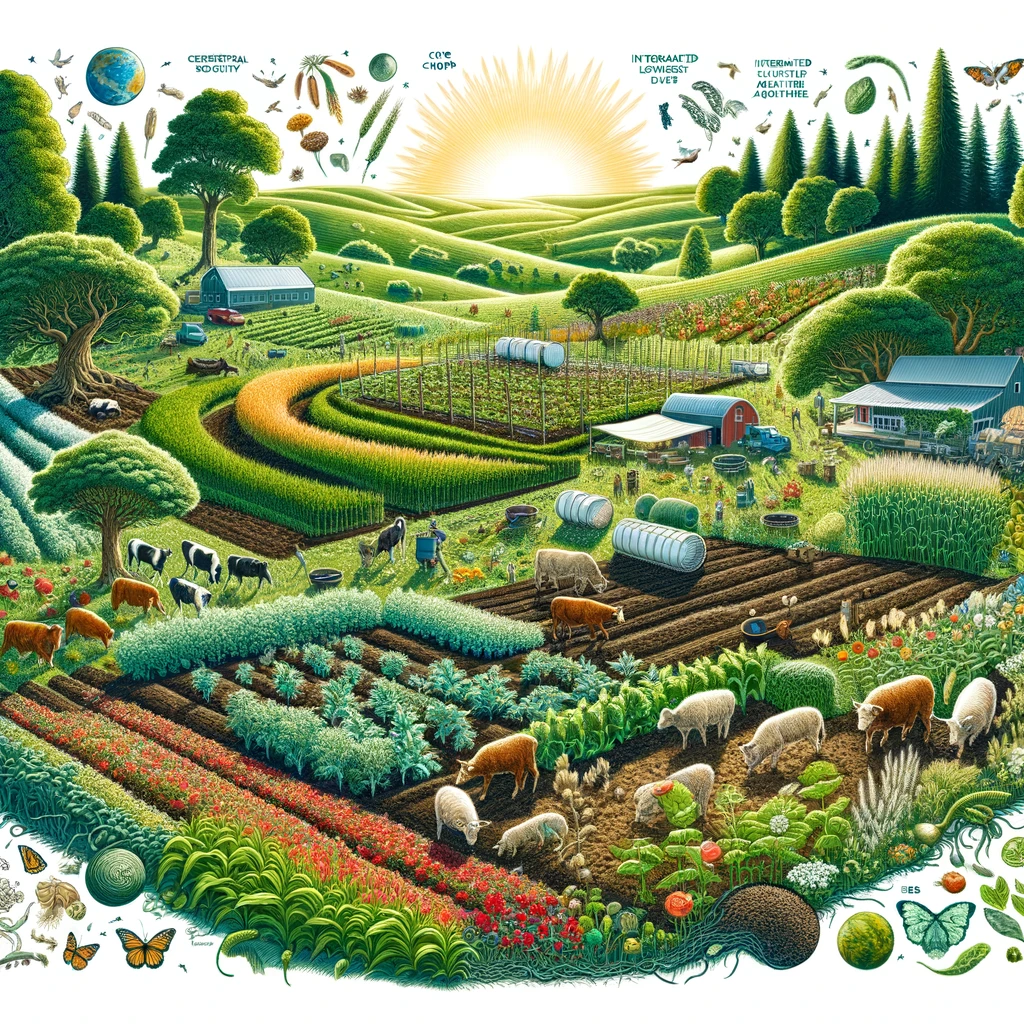
In the quest to address the pressing challenges of climate change, soil degradation, and biodiversity loss, regenerative agriculture emerges as a transformative approach that offers a beacon of hope. This farming philosophy goes beyond mere sustainability; it actively revitalizes the ecosystem, enriching soil health, enhancing water retention, and sequestering carbon, thereby contributing to the health of the planet and its inhabitants.
At its core, regenerative agriculture involves practices that restore the land rather than deplete it. Unlike conventional farming, which often relies on chemical inputs and monoculture, regenerative techniques embrace a holistic view of agriculture. By integrating crop rotation, cover cropping, reduced tillage, agroforestry, and managed grazing, these practices work in harmony with nature to rebuild organic soil matter and restore degraded soil biodiversity.
The benefits of regenerative agriculture are manifold. For starters, it significantly boosts soil fertility, leading to healthier crops that are more resilient to pests and diseases. This resilience reduces the need for synthetic fertilizers and pesticides, decreasing the farmers’ input costs and environmental impact. Moreover, by enhancing soil structure and health, regenerative agriculture helps combat soil erosion, one of the most pervasive problems facing agricultural lands worldwide.
Water conservation is another critical advantage. Regenerative practices increase the soil’s water-holding capacity, mitigating the effects of drought and reducing the reliance on irrigation. This not only conserves precious water resources but also ensures crop survival during extreme weather conditions, making food systems more resilient in the face of climate change.
Perhaps the most compelling aspect of regenerative agriculture is its capacity to sequester carbon. Healthy, organic-rich soils act as carbon sinks, drawing down carbon dioxide from the atmosphere and locking it away. At a time when reducing atmospheric CO2 levels is paramount, regenerative agriculture offers a practical, nature-based solution to climate change, potentially offsetting a significant portion of global emissions.
The movement towards regenerative agriculture also fosters a deeper connection between farmers, consumers, and the land. It encourages practices that respect the rhythms of nature and the well-being of all its inhabitants. As consumers become more aware of the environmental and health impacts of their food choices, the demand for regeneratively grown produce is rising, paving the way for a shift in agricultural paradigms.
In conclusion, regenerative agriculture represents a paradigm shift in the way we cultivate our food. It challenges the status quo of industrial agriculture, proposing a method that is not only environmentally sustainable but truly regenerative. By embracing these practices, farmers, consumers, and policymakers can play a crucial role in healing our planet, ensuring food security, and building a more resilient future. In the face of mounting environmental challenges, regenerative agriculture shines as a holistic, effective, and hopeful approach to agriculture, one that promises to leave the earth better than we found it.